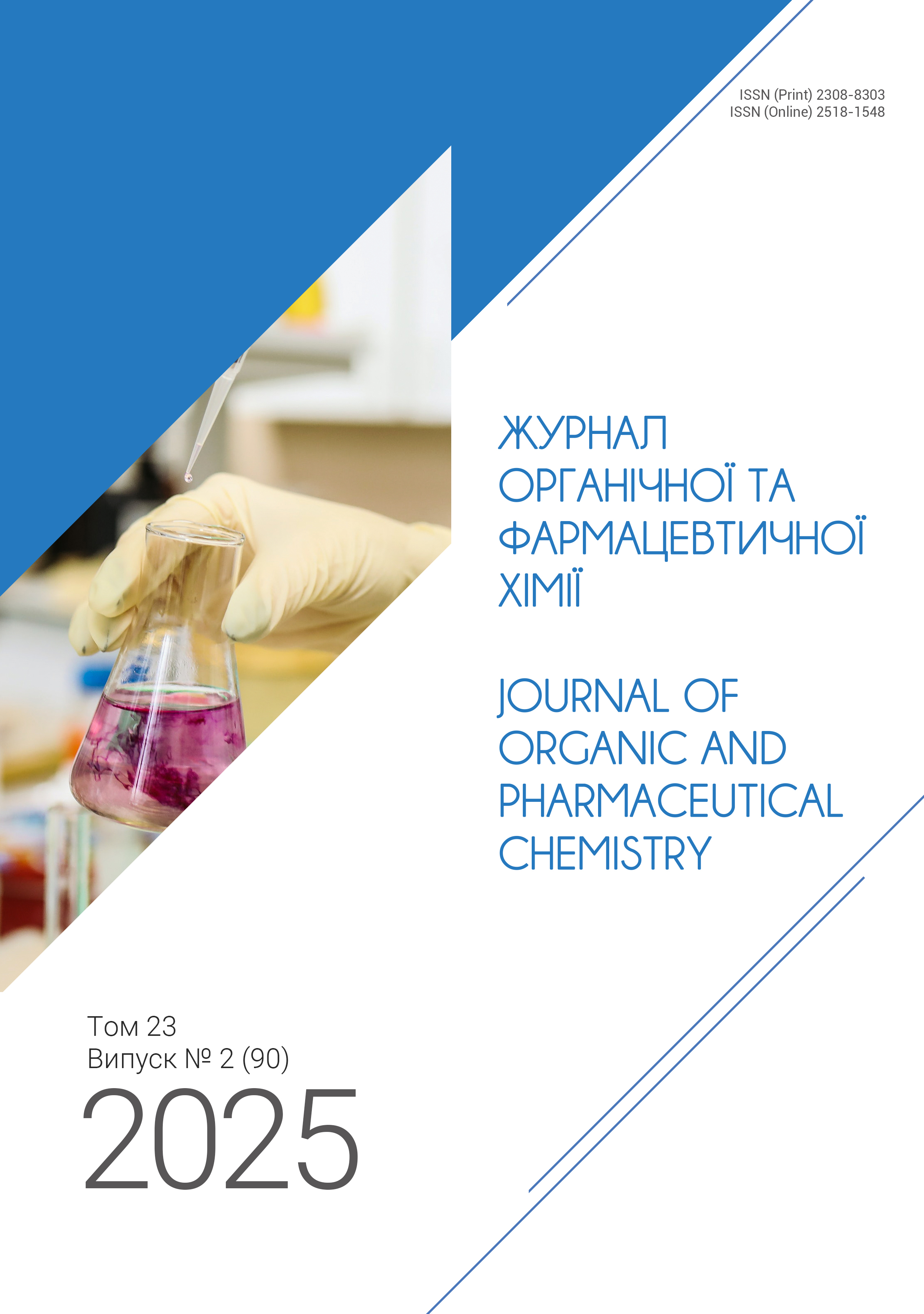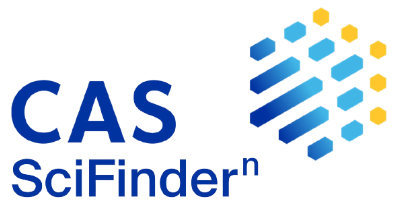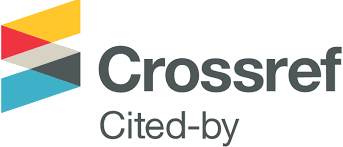Catalytic Performance of Pd Deposited on Various Carriers in Hydrogenation of Quinoline
DOI:
https://doi.org/10.24959/ophcj.25.330039Keywords:
hydrogenation, palladium, activated carbon, quinoline, specific surfaceAbstract
Pd nanoparticles were deposited on two different grades of activated carbon – NORIT and CAW. In addition, these carbons were pre-treated with HNO3 or covered by polyaniline, and these modified carbons were used as carriers for the Pd deposition. The resulting materials were tested as catalysts for the hydrogenation of quinoline. The best-performing samples were further tested in the hydrogenation of 4-methylquinoline. The structural features of carriers and catalysts were elucidated by the N2 adsorption studies. The grade of activated carbon was found to be a key factor controlling its performance, and the effect of the surface modification was negligible.
Supporting Agency
- The authors received no specific funding for this work.
Downloads
References
- Jackson, S. D. (Ed.). Hydrogenation: Catalysts and Processes; De Gruyter: Berlin, Boston, 2018.
- Stoffels, M. A.; Klauck, F. J. R.; Hamadi, T.; Glorius, F.; Leker, J. Technology Trends of Catalysts in Hydrogenation Reactions: A Patent Landscape Analysis. Adv. Synth. Catal. 2020, 362, 1258 - 1274. https://doi.org/10.1002/adsc.201901292.
 |
|  |
| 
- Zhao, X.; Chang, Y.; Chen, W.-J.; Wu, Q.; Pan, X.; Chen, K.; Weng, B. Recent Progress in Pd-Based Nanocatalysts for Selective Hydrogenation. ACS Omega 2022, 7, 17–31. https://doi.org/10.1021/acsomega.1c06244.
 |
|  |
| 
- Andrade, M. A.; Martins, L. M. D. R. S. Supported Palladium Nanocatalysts: Recent Findings in Hydrogenation Reactions. Processes 2020, 8, 1172. https://doi.org/10.3390/pr8091172.
 |
| 
- He, M.-Q.; Ai, Y.; Hu, W.; Guan, L.; Ding, M.; Liang, Q. Recent Advances of Seed-Mediated Growth of Metal Nanoparticles: From Growth to Applications. Adv. Mater. 2023, 35, 2211915. https://doi.org/10.1002/adma.202211915.
 |
|  |
| 
- Li, Y.; Xu, X.; Zhang, P.; Gong, Y.; Li, H.; Wang, Y. Highly Selective Pd@mpg-C₃N₄ Catalyst for Phenol Hydrogenation in Aqueous Phase. RSC Adv. 2013, 3, 10973 - 10982. https://doi.org/10.1039/C3RA41397G.
 |
| 
- Gao, Y.; Chen, C.-A.; Gau, H.-M.; Bailey, J. A.; Akhadov, E.; Williams, D.; Wang, H. L. Facile Synthesis of Polyaniline-Supported Pd Nanoparticles and Their Catalytic Properties toward Selective Hydrogenation of Alkynes and Cinnamaldehyde. Chem. Mater. 2008, 20, 2839 - 2844. https://doi.org/10.1021/cm7030416.
 |
| 
- Kompaniiets, O. O.; Subotin, V. V.; Poturai, A. S.; Yurchenko, A. A.; Gorlova, A. A.; Bychko, I. B.; Kotenko, I. Y.; Pariiska, O. O.; Ryabukhin, S. V.; Volochnyuk, D. M.; et al. Catalytic Properties of Pd Deposited on Polyaniline in the Hydrogenation of Quinoline. Chemistry 2024, 6, 738 - 759. https://doi.org/10.3390/chemistry6040044.
 |
| 
- Yakukhnov, S. A.; Pentsak, E. O.; Galkin, K. I.; Mironenko, R. M.; Drozdov, V. A.; Likholobov, V. A.; Ananikov, V. P. Rapid “Mix-and-Stir” Preparation of Well-Defined Palladium on Carbon Catalysts for Efficient Practical Use. ChemCatChem 2018, 10, 1869 - 1873. https://doi.org/10.1002/cctc.201700738.
 |
| 
- Subotin, V. V.; Ivanytsya, M. O.; Terebilenko, A. V.; Yaremov, P. S.; Pariiska, O. O.; Akimov, Y. M.; Kotenko, I. E.; Sabov, T. M.; Kurmach, M. M.; Ryabukhin, S. V.; et al. Air-Stable Efficient Nickel Catalyst for Hydrogenation of Organic Compounds. Catalysts 2023, 13, 706. https://doi.org/10.3390/catal13040706.
 |
| 
- Sergeev, A. G.; Webb, J. D.; Hartwig, J. F. A Heterogeneous Nickel Catalyst for the Hydrogenolysis of Aryl Ethers without Arene Hydrogenation. J. Am. Chem. Soc. 2012, 134, 20226 - 20229. https://doi.org/10.1021/ja3085912.
 |
|  |
| 
- Gao, F.; Webb, J. D.; Hartwig, J. F. Chemo- and Regioselective Hydrogenolysis of Diaryl Ether C–O Bonds by a Robust Heterogeneous Ni/C Catalyst: Applications to the Cleavage of Complex Lignin-Related Fragments. Angew. Chem. Int. Ed. 2016, 55, 1474 - 1478. https://doi.org/10.1002/anie.201509133.
 |
|  |
| 
- Leonard, D. N.; Franzen, S. Is Pd₂(DBA)₃ a Feasible Precursor for the Synthesis of Pd Nanoparticles? J. Phys. Chem. C 2009, 113, 12706 - 12714. https://doi.org/10.1021/jp903417r.
 |
| 
- Noh, J. S.; Schwarz, J. A. Effect of HNO₃ Treatment on the Surface Acidity of Activated Carbons. Carbon 1990, 28 (5), 675 - 682. https://doi.org/10.1016/0008-6223(90)90069-B.
 |
| 
- El-Hendawy, A. A. A. Influence of HNO₃ Oxidation on the Structure and Adsorptive Properties of Corncob-Based Activated Carbon. Carbon 2003, 41 (4), 713 - 722. https://doi.org/10.1016/S0008-6223(03)00029-0.
 |
| 
- ShamsiJazeyi, H.; Kaghazchi, T. Investigation of nitric acid treatment of activated carbon for enhanced aqueous mercury removal. J. Ind. Eng. Chem., 2010, 16, 852 - 858. https://doi.org/10.1016/j.jiec.2010.03.012.
 |
| 
- Takaoka, M.; Yokokawa, H.; Takeda, N. The effect of treatment of activated carbon by H2O2 or HNO3 on the decomposition of pentachlorobenzene. App. Catal. B: Env. 2007, 74, 179 - 186. https://doi.org/10.1016/j.apcatb.2007.02.009.
 |
| 
- Liang, Z.; Guo, S.; Dong, H.; Li, Z.; Liu, X.; Li, X.; Kang, H.; Zhang, L.; Yuan, L.; Zhao, L. Modification of Activated Carbon and Its Application in Selective Hydrogenation of Naphthalene. ACS Omega 2022, 7, 38550 - 38560. https://doi.org/10.1021/acsomega.2c03914.
 |
|  |
| 
Downloads
Published
How to Cite
Issue
Section
License
Copyright (c) 2025 National University of Pharmacy

This work is licensed under a Creative Commons Attribution 4.0 International License.
Authors publishing their works in the Journal of Organic and Pharmaceutical Chemistry agree with the following terms:
1. Authors retain copyright and grant the journal the right of the first publication of the work under Creative Commons Attribution License allowing everyone to distribute and re-use the published material if proper citation of the original publication is given.
2. Authors are able to enter into separate, additional contractual arrangements for the non-exclusive distribution of the journal’s published version of the work (e.g., post it to an institutional repository or publish it in a book) providing proper citation of the original publication.
3. Authors are permitted and encouraged to post their work online (e.g. in institutional repositories or on authors’ personal websites) prior to and during the submission process, as it can lead to productive exchanges, as well as earlier and greater citation of published work (see The Effect of Open Access).















